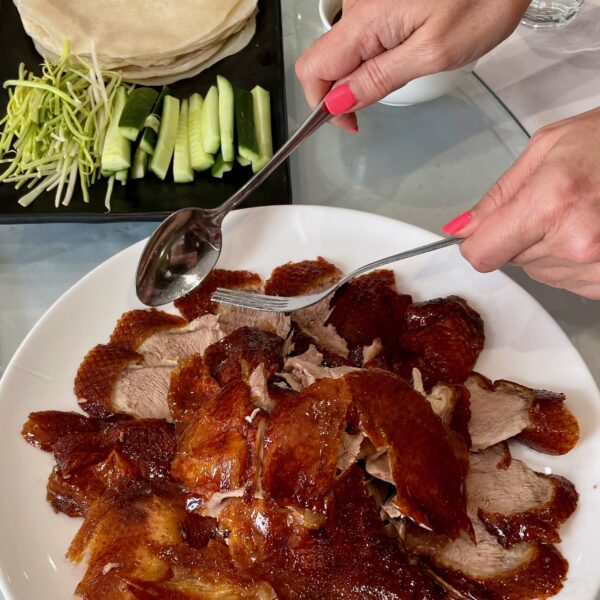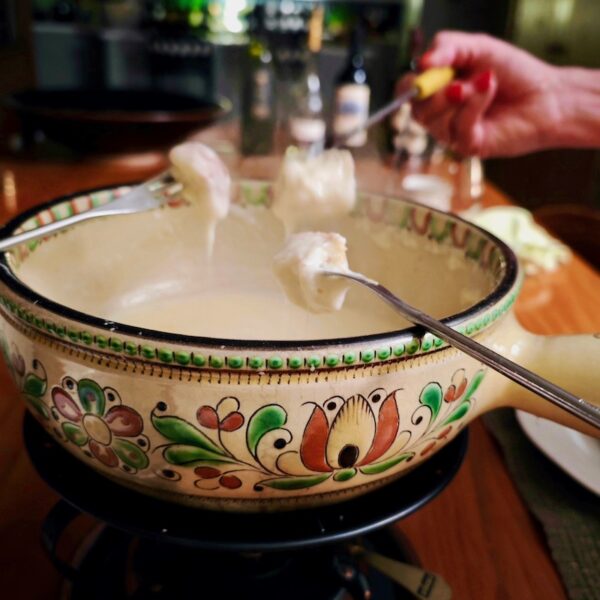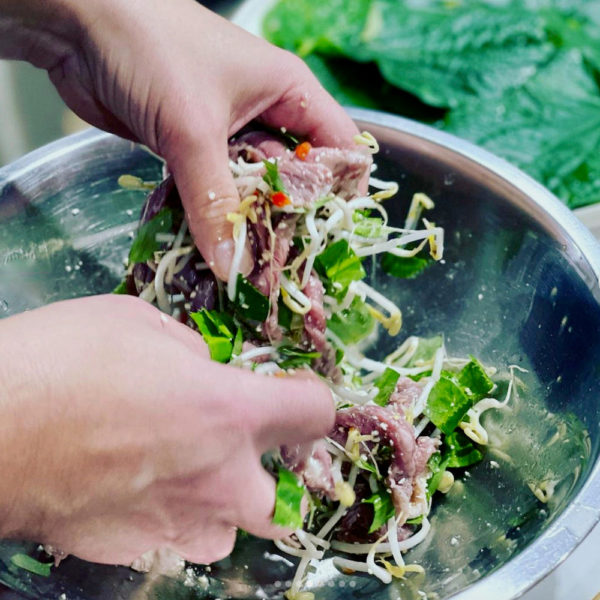 This is not about wines from the district of Orange in NSW, but wines with an orange (or amber) hue – in fact ‘amber wines’ is becoming the preferred name to avoid confusion. Virtually all grapes – red or white – produce clear juice. Grapes for white wine are pressed and the juice immediately run off the skins, rosé is left in contact with the skins for a short time, while red wines spend more time on skins absorbing more colour (and tannins, phenols and other elements that add complexity). Enter amber wines, a relatively new addition to our bars and restaurants, although the style is ancient. They are part of the renaissance of natural winemaking techniques and are made by treating white grapes like red ones: leaving the juice in contact with the skins, for days or months, so that it absorbs colour and other elements. They have a rich mouthfeel – if you close your eyes you could believe you’re drinking red wine – and a slightly feral cider-like nose and sherry-like oxidative characters. Some can be challenging, but they add a whole new dimension to our wine drinking pleasure. So next time you order a glass of wine, look beyond red, white and rosé, ask if they have an amber wine and start exploring. Here are five of my favourites from around the world.
This is not about wines from the district of Orange in NSW, but wines with an orange (or amber) hue – in fact ‘amber wines’ is becoming the preferred name to avoid confusion. Virtually all grapes – red or white – produce clear juice. Grapes for white wine are pressed and the juice immediately run off the skins, rosé is left in contact with the skins for a short time, while red wines spend more time on skins absorbing more colour (and tannins, phenols and other elements that add complexity). Enter amber wines, a relatively new addition to our bars and restaurants, although the style is ancient. They are part of the renaissance of natural winemaking techniques and are made by treating white grapes like red ones: leaving the juice in contact with the skins, for days or months, so that it absorbs colour and other elements. They have a rich mouthfeel – if you close your eyes you could believe you’re drinking red wine – and a slightly feral cider-like nose and sherry-like oxidative characters. Some can be challenging, but they add a whole new dimension to our wine drinking pleasure. So next time you order a glass of wine, look beyond red, white and rosé, ask if they have an amber wine and start exploring. Here are five of my favourites from around the world.
Els Bassots Conca de Barbera DO (Catalonia, Spain)
www.celler-escodasanahuja.com/
This chenin blanc spends 4 months in French oak giving it a creamy mouthfeel, slightly smoky nose and a minerally palate with hints of citrus, apple and tropical fruit. A good place to start.
Channing Daughters Ramato (New York, USA)
www.channingdaughters.com
Pinot grigio which has spent about 2½ weeks on skins then 11 months in old French and Slovenian oak, producing a wonderful copper colour, honeyed nose and nutty, spicy flavours of dried fruit and peaches.
Pheasant’s Tears Chinuri (Kakheti, Georgia)
www.facebook.com/Pheasants-Tears-Winery
Chinuri, a grape indigenous to Georgia (the country not the USA state), is aged in beeswax-lined clay amphorae producing a light, crisp wine with lovely floral nose and lime, pear, almonds and dried apple flavours.
Damijan Bianco Kaplja, Venezia Giulia IGT (Friuli, Italy)
www.damijanpodversic.com
This blend of chardonnay with local varietals friulano and malvasia istriana, grown on the Italian/Slovenian border, spends 60 days on skins in wooden vats then 2 years in oak. It’s full-bodied with a smoky, ripe citrus nose and passionfruit, candied citrus and herbal flavours.
Elementis (Swartland, South Africa)
www.eurocentricwine.com.au
Chenin blanc left on skins for 3 weeks then aged in old oak, producing a lovely textured wine with good acid and flavours of apple and peach.
Like Natural Wines? Check Out More Here!












